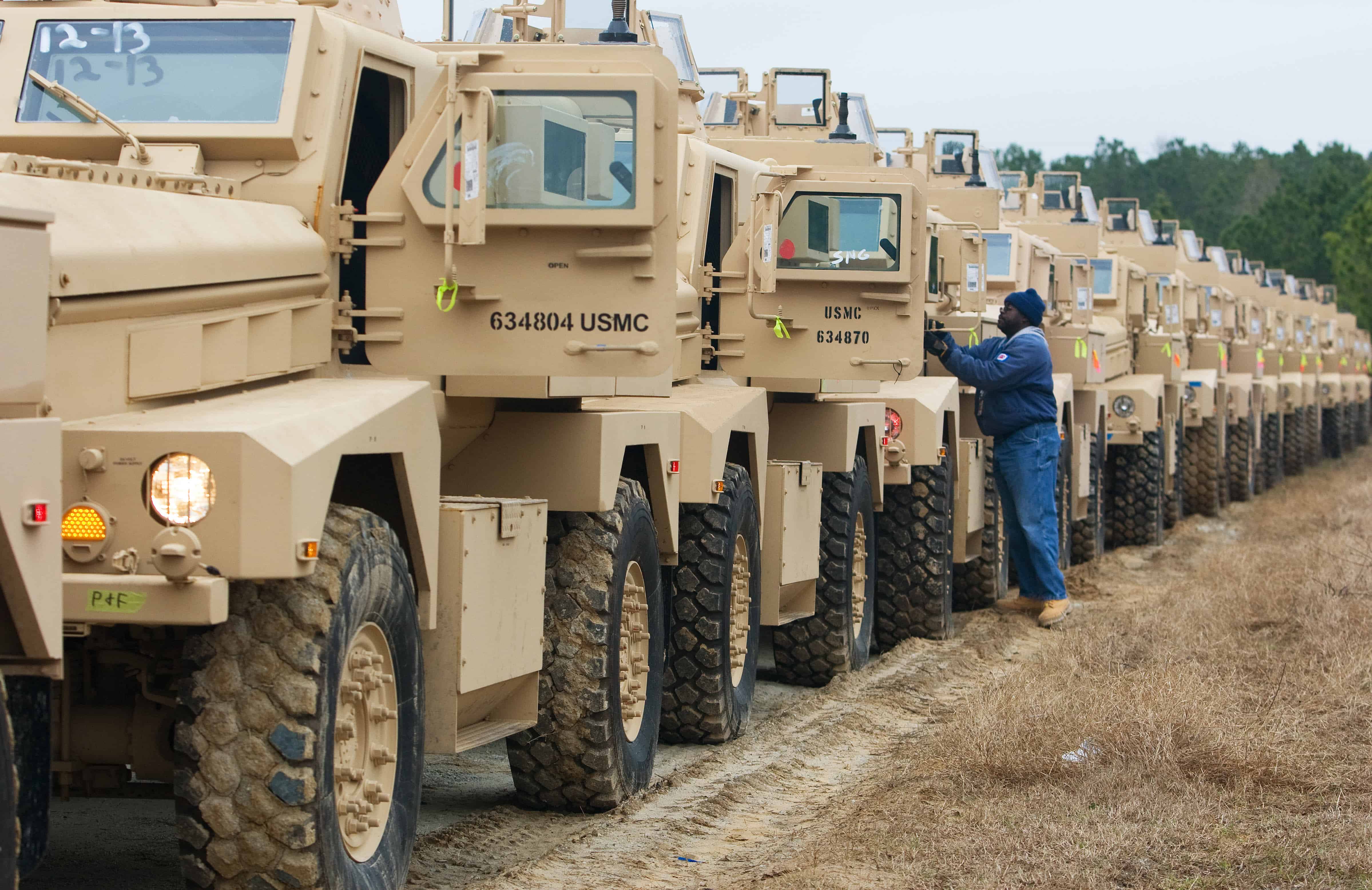If you’re going to wage war on drugs, you need to be outfitted like a warrior.
That seems to be the rationale behind hundreds of U.S. police department requests for armored trucks submitted to the Pentagon between 2012 and 2014. The requests, unearthed in a FOIA request by Mother Jones magazine, shed light on how the war on drugs has directly contributed to the militarization of local police forces in the United States in recent years.
Police departments can request surplus military gear from the Pentagon through the Department of Defense’s 1033 program, which doles out hundreds of millions of dollars in military goods to cops each year. The equipment includes everything from underwear to office equipment to armored combat vehicles. After Ferguson, when images of local cops training assault rifles on peaceful protestors from atop armored trucks flooded the airwaves, the program has come under increasing scrutiny.
The Mother Jones investigation focuses on requests for armored combat vehicles, arguably the most iconic piece of police military equipment in the post-Ferguson era. Among the requests Mother Jones obtained, the most frequently-cited rationale for needing an armored vehicle was drugs: “Fully a quarter of the 465 requests projected using the vehicles for drug enforcement,” the investigation found. By contrast, police departments rarely cited hostage situations, terrorist attacks or armed gunmen as rationale for obtaining the trucks.
Related: Duh: DEA finally admits marijuana is safer than heroin
At least seven departments explicitly cited marijuana in their vehicle requests, tying pot with methamphetamines for the drug that shows up most often in the documents. In 2012, Sheriff Tom Bosenko of Shasta County, California, requested two armored tactical vehicles to be “used during apprehension of suspects in both Marijuana eradications and during high risk search warrant service for drug offenders.”
In 2013, the Sheriff of Sumter County, Florida, requested one armored vehicle partly because his office had located “several marijuana grows both indoors and outdoors” in Sumter County. Here’s how other departments wanted to wage war on pot from the gun turret of an armored truck:
Clearwater County, Idaho, has a population of fewer than 10,000 people. It seems like overkill to keep an armored truck on hand for the purpose of “marijuana eradication.” This is especially true when you consider that in recent years, the number of marijuana grow sites discovered in the entire state of Idaho can be counted on one hand.
But overkill has been part of the drug war since Day 1. Experts largely agree that the harms inflicted by the way we wage the war on drugs — incarceration, police killings, gangs fighting over black market turf — far outweigh the costs to society of drug use itself. The Obama administration has been smartly dialing back the rhetoric and policies of the drug war.
Earlier this year, the administration even started limiting the types of military equipment that police departments can request through the Pentagon’s 1033 program. But notably, armored vehicles are still available. So for the time being at least, your local police department can still request what amounts to a tank to deal with a marijuana plot.
Read more coverage of why the drug war is stupid here
© 2015, The Washington Post

